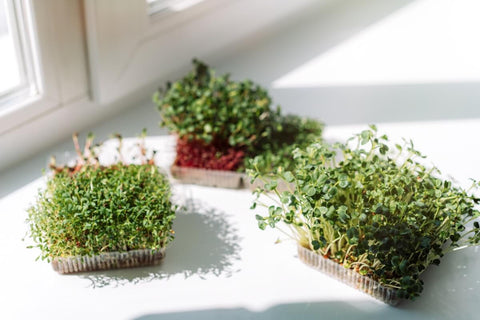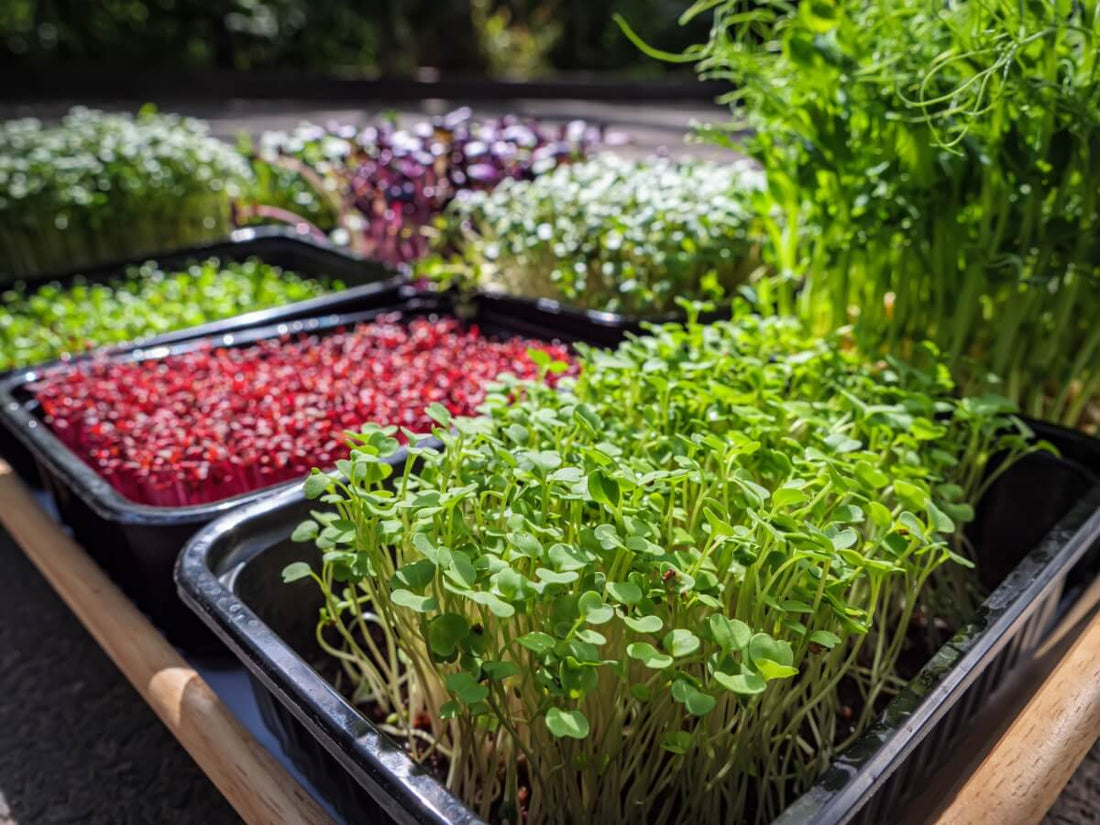These tiny superfoods pack a punch of nutrients and flavors, making them a versatile addition to salads, sandwiches, and garnishes on a variety of recipes. In this guide, we explore the differences between growing microgreens indoors and outdoors and help you make an informed decision about which method suits your needs best.
Why Grow Microgreens at Home from Non-Treated Seeds?

Growing microgreens at home ensures you have access to fresh, pesticide-free greens at your fingertips. By using non-treated seeds, you can guarantee the purity and safety of your harvest, free from harmful chemicals often found in commercially grown produce in the supermarket. It also allows you to have better control over the high grocery costs of these specialty products.
Growing Microgreens Indoors vs Outdoors: Factors to Consider

1. Sunlight Exposure:
- Indoors: Artificial grow lights are often necessary to provide sufficient light intensity for indoor microgreen cultivation. However, if you can find a sunny balcony or even a windowsill with partial sunlight, that is more than enough to grow microgreens.
- Outdoors: Natural sunlight is abundant and provides optimal growing conditions for outdoor microgreens. But one must be wary of too harsh sunlight during the peak summer months.
2. Humidity:
- Indoors: In a grow light setup, humidity levels can make or break your microgreen harvest. Hence, it’s best to invest in a humidifier.
- Outdoors: In outdoor settings, the humidity levels may fluctuate depending on weather conditions but since the airflow is better outside, it is generally adequate for microgreen growth.
3. Temperature:
- Indoors: The ideal temperatures for germination and growth of healthy microgreens range between 18-24°C (65-75°F) which can be controlled in an indoor microgreen setup. In case, you are growing microgreens in partial sunlight, there is no need to worry about the temperature.
- Outdoors: Microgreens thrive in moderate temperatures, typically between 15-25°C (59-77°F), but may require protection from extreme heat or cold.
4. Growing Medium:
- Indoors: Various growing mediums such as potting soil, coconut coir, or vermiculite can be used indoors.
- Outdoors: Garden soil can be heavy and might not be suitable for growing microgreens. Therefore, it is ideal to use soil or potting mixes with good drainage that are specially formulated for microgreen cultivation.
5. Pest Prevention:
- Indoors: Indoor environments may be less susceptible to pests, but precautions such as regular monitoring and proper ventilation are still necessary.
- Outdoors: Outdoor microgreens may be more prone to pest infestations, requiring measures such as companion planting or natural pest repellents at times.
6. Mobility:
- Indoors: Growing microgreens indoors or on a sunny balcony or window in a few shallow containers allows for greater mobility and flexibility in terms of placement and arrangement.
- Outdoors: Growing microgreens outdoors may require a dedicated garden bed or space, limiting mobility.
Conclusion:

For personal consumption, growing microgreens in partial sunlight on a sunny balcony or window sill using reusable containers with at least 3-inch depth is the most effective and economical method. However, for commercial purposes, investing in a dedicated greenhouse or indoor growing setup equipped with grow lights and humidity control systems may be more practical. Whether you choose to grow indoors or outdoors, the key is to provide optimal growing conditions and regular care to ensure a bountiful harvest of fresh, nutritious microgreens.


 Sign In
Sign In









Let us know your feedback
* Comments must be approved before being displayed.